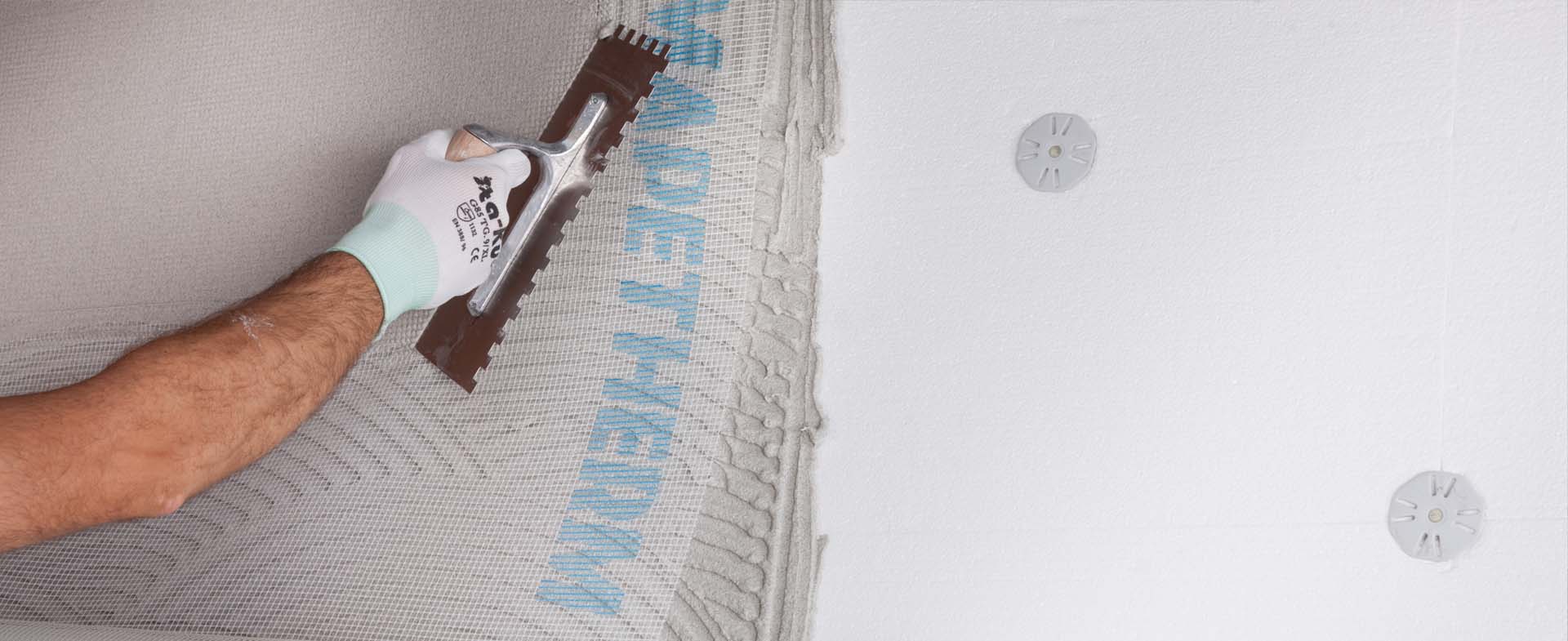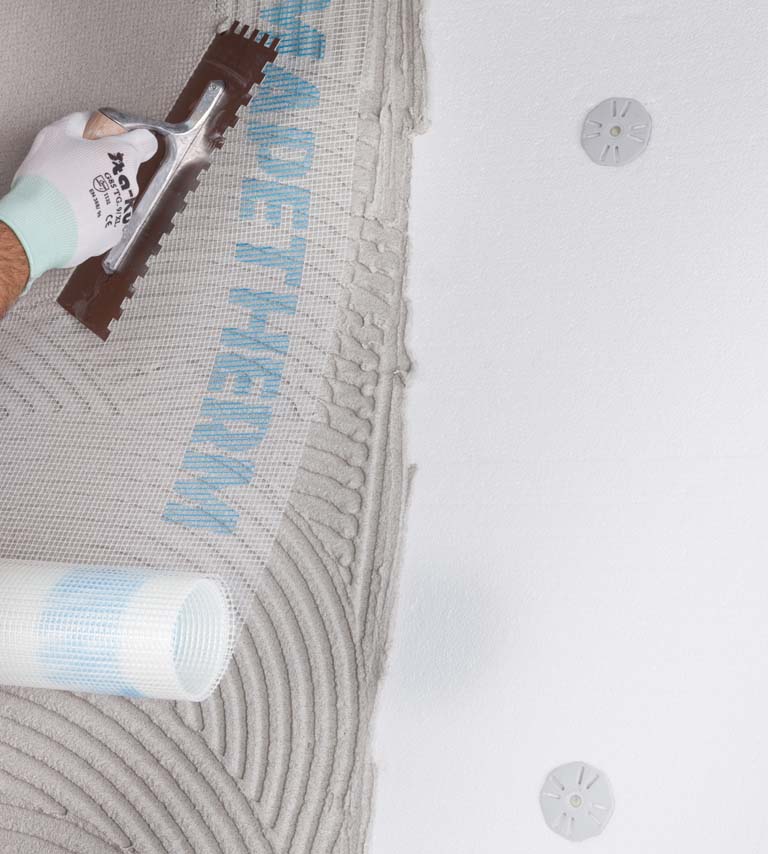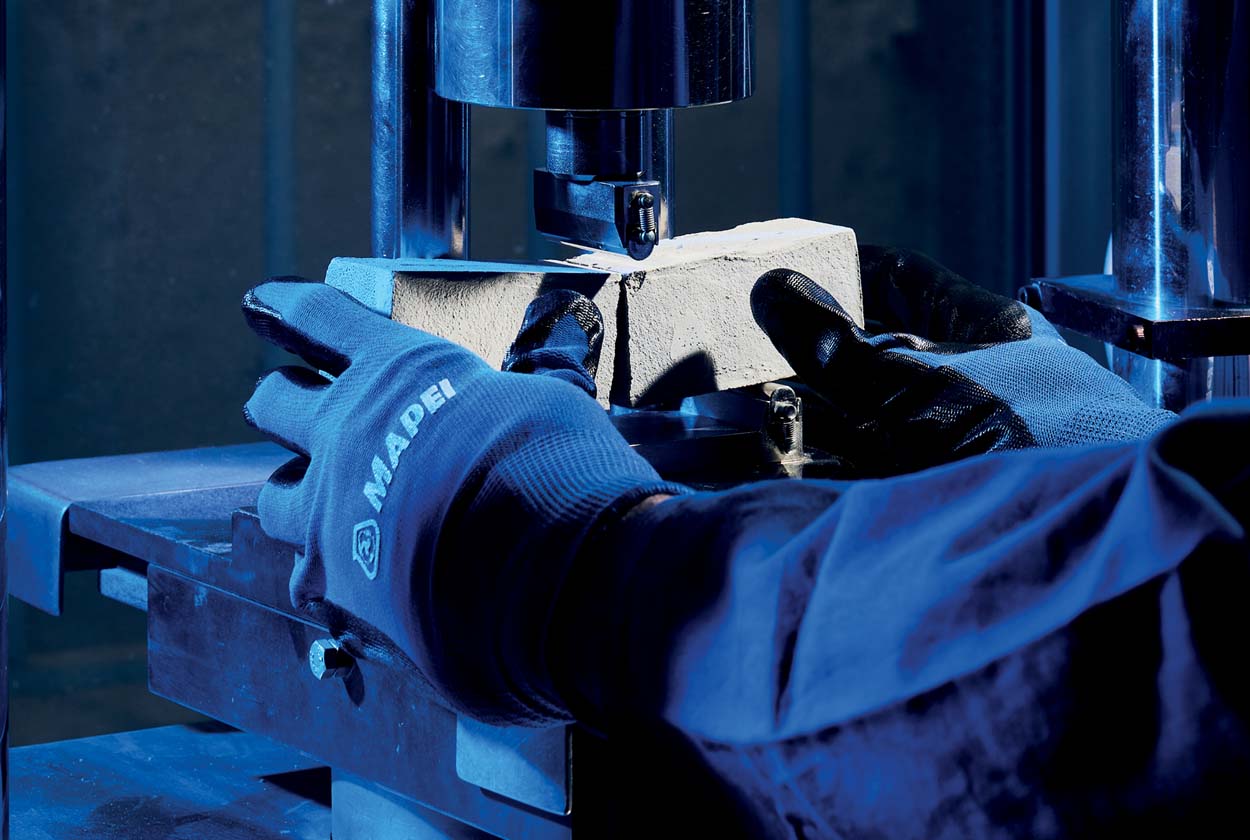

Mapetherm: development of mortars
A range of applications by developing the functionality of mortars used in external thermal insulation systems
Research, development and testing of adhesives-renders to guarantee high performance in all conditions of use
The MAPETHERM system is an example of the range of solutions available thanks to the technological synergies possible between the various products used in Mapei systems, and for which there is particular focus on their compatibility. A lot of emphasis is placed on studying and developing the functionality of mortars used for the external thermal insulation systems, as shown in the image on the right. We refer to the bonding layer, which acts as a connecting element between the insulating panel and substrate, and the render/skim coat layer, in which strengthening mesh is embedded to absorb surface tension and mechanical stress.
To identify the most appropriate formulas to perform these functions Mapei made full use of the experience of the cementitious adhesives laboratory within the Research & Development Centre in Milan, which has spent decades developing products for installing ceramic tiles and which, in this particular case, transferred its experience and knowledge to a different area of use and adapted them to suit a completely different type of application. The primary objective was to identify a solution that would enable one single product to be used for both types of use: this is what “AR”, or Adhesive-Render, stands for, a formula that has both properties when used as part of the system.

Below is a summary of the most significant characteristics for this type of product and the problems the Research & Development laboratory had to overcome when developing the formulation:
- the product must maintain its workability for a sufficient period of time for it to be applied;
- the capacity to adhere to a polystyrene panel;
- on the bonding side, the capacity to dry and set within an appropriate period of time;
- sufficiently thixotropic to enable the product to be applied in layers thick enough to compensate for irregularities in the masonry and, at the same time, without slumping when applied on the wall;
- good workability when used for skimming so that installers can work it with a trowel to obtain the finish required;
- good adhesion of the reinforcing mesh embedded in the skim coat;
- the capacity to absorb impact loads on walls once set without breaking;
- the capacity to absorb stresses caused by temperature variations in the construction materials;
- the aggregate particles have to be of a size that ensures the skim coat has the required final texture.
The mortars from the Mapetherm system are also available in a white version, for which strict controls of the raw materials are extremely important in order to achieve constant white index control during production.
Developing formulas with the characteristics mentioned above means identifying the most theoretically appropriate mixtures by using chemical additives and the raw materials – aggregates and cement – considered most suitable, and then testing them in the laboratory to verify these properties. And this is where the extensive experience of Mapei R&D laboratory comes into play: the development of products for installing ceramic tiles, research into rheological additives to improve workability and studying how these additives interact with cementitious binders, identifying polymers to enable better adhesion to insulating panels, and choosing the most suitable aggregates to obtain the textured finish required.
Then, during the verification phase, it is important to have test protocols and methods available to measure workability and thixotropy, particularly viscometers to carry out measurements and identify the amount of water required to give a mix the best consistency. Viscometry can also be combined with slip tests, with which it is possible to evaluate the slump of an adhesive mortar when applied on a wall at the maximum thickness permitted for its application.

It is also very important to correctly measure the adhesion capacity of the adhesive mortar to the insulating panels and of the skim coat to the mesh, for which the experience gained over the years in evaluating installation systems for ceramic tiles played an important role. Last but not least are application tests, which are carried out to establish whether the evaluations performed under laboratory conditions really do correspond with the properties observed in similar conditions during on-site applications.
The capacity to absorb stresses induced by expansion from temperature variations is mainly a function of the mortar’s modulus of elasticity: controlling and measuring this parameter when formulating the product is one of the main characteristics of renders in the MAPETHERM system. The MAPETHERM products also carry CE marking in compliance with European standard EN 998-1, which defines the specifications for internal and external rendering mortars. The characteristics and properties of a formula are established not only for laboratory prototypes; they are also used when defining specifications for production purposes and as a baseline to control consistency during production and, similarly, to control the raw materials.






